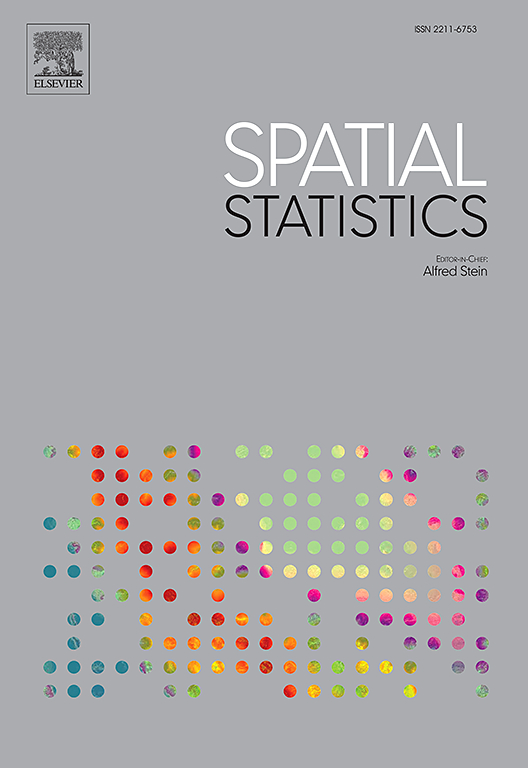Regularization of the Ensemble Kalman Filter using a non-parametric, non-stationary spatial model
IF 2.5
2区 数学
Q3 GEOSCIENCES, MULTIDISCIPLINARY
引用次数: 0
Abstract
The sample covariance matrix of a random vector is a good estimate of the true covariance matrix if the sample size is much larger than the length of the vector. In high-dimensional problems, this condition is never met. As a result, in high dimensions the Ensemble Kalman Filter’s (EnKF) ensemble does not contain enough information to specify the prior covariance matrix accurately. This necessitates the need for regularization of the analysis (observation update) problem. We propose a regularization technique based on a new spatial model. The model is a constrained version of the general Gaussian process convolution model. The constraints include local stationarity and smoothness of local spectra. We regularize EnKF by postulating that its prior covariances obey the spatial model. Placing a hyperprior distribution on the model parameters and using the likelihood of the prior ensemble data allows for an optimized use of both the ensemble and the hyperprior. A linear version of the respective estimator is shown to be consistent. A more accurate nonlinear neural-Bayes implementation of the estimator is developed. In simulation experiments, the new technique led to substantially better EnKF performance than several existing techniques.
利用非参数、非稳态空间模型对集合卡尔曼滤波器进行规范化处理
如果样本量远大于向量的长度,那么随机向量的样本协方差矩阵就是真实协方差矩阵的良好估计值。在高维问题中,这一条件永远无法满足。因此,在高维情况下,卡尔曼滤波器(EnKF)的集合不包含足够的信息来准确指定先验协方差矩阵。这就需要对分析(观测更新)问题进行正则化。我们提出了一种基于新空间模型的正则化技术。该模型是一般高斯过程卷积模型的约束版本。约束条件包括局部静止性和局部频谱的平滑性。我们假设 EnKF 的先验协方差服从空间模型,从而对 EnKF 进行正则化。在模型参数上放置超先验分布,并使用先验集合数据的似然性,可以优化集合和超先验的使用。研究表明,各自估计器的线性版本是一致的。我们还开发了一种更精确的非线性神经贝叶斯估计器。在模拟实验中,新技术的 EnKF 性能大大优于现有的几种技术。
本文章由计算机程序翻译,如有差异,请以英文原文为准。
求助全文
约1分钟内获得全文
求助全文
来源期刊

Spatial Statistics
GEOSCIENCES, MULTIDISCIPLINARY-MATHEMATICS, INTERDISCIPLINARY APPLICATIONS
CiteScore
4.00
自引率
21.70%
发文量
89
审稿时长
55 days
期刊介绍:
Spatial Statistics publishes articles on the theory and application of spatial and spatio-temporal statistics. It favours manuscripts that present theory generated by new applications, or in which new theory is applied to an important practical case. A purely theoretical study will only rarely be accepted. Pure case studies without methodological development are not acceptable for publication.
Spatial statistics concerns the quantitative analysis of spatial and spatio-temporal data, including their statistical dependencies, accuracy and uncertainties. Methodology for spatial statistics is typically found in probability theory, stochastic modelling and mathematical statistics as well as in information science. Spatial statistics is used in mapping, assessing spatial data quality, sampling design optimisation, modelling of dependence structures, and drawing of valid inference from a limited set of spatio-temporal data.
 求助内容:
求助内容: 应助结果提醒方式:
应助结果提醒方式:


